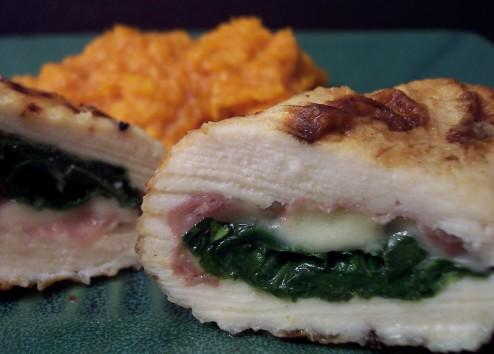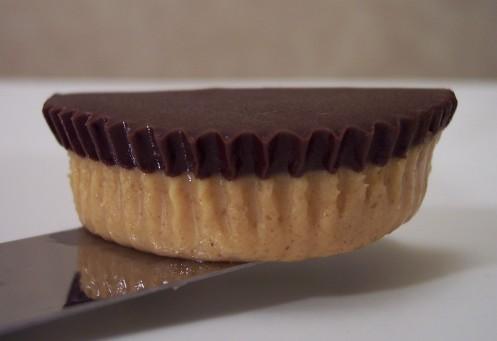I was hoping it would spring into action so I had enough to make this Pea and Parsley Pesto with Linguine, but after waiting for it to catch the rest of the plants, I gave up and just picked up a healthy bunch at the farmers' market this past weekend.
 To prepare the pesto, you'll need give the peas a quick dip in a pot of boiling, salted water. However, don't bother dirtying a small pan for this. Use a large enough pot that you can cook the pasta in and instead of draining the water away when the peas are done, take them out with a slotted spoon and use the same water to do the pasta. The cooked peas went into a food processor, along with parsley, a handful of toasted walnuts, sharp Parmesan cheese, three cloves of smashed garlic and a tablespoon of water (just swipe a scoop from the pea cooking water).
To prepare the pesto, you'll need give the peas a quick dip in a pot of boiling, salted water. However, don't bother dirtying a small pan for this. Use a large enough pot that you can cook the pasta in and instead of draining the water away when the peas are done, take them out with a slotted spoon and use the same water to do the pasta. The cooked peas went into a food processor, along with parsley, a handful of toasted walnuts, sharp Parmesan cheese, three cloves of smashed garlic and a tablespoon of water (just swipe a scoop from the pea cooking water).After a few quick pulses to make a garlicky, thick paste, the processor is set to auto, with a steady stream of fruity extra-virgin olive oil poured in, blitzing the ingredients together and creating the pesto. Wait to season with any salt until you taste a small spoonful of the pesto - with the Parmesan, you may not need as much as you think. The pasta is then dropped into the pot of pea cooking water (brought back up to a rapid boil first) and just before it tests done, a cup of peas are tossed in to warm through. Before you drain away the water, reserve a cupful of the starchy liquid to be used in a second.
With the pasta and peas put right back into the same vessel, a few heavy spoonfuls of the pesto is added in, along with enough of the reserved liquid to give the pesto a consistency to soak each strand of pasta well. While there is plenty of cheese in the pesto, you can't go wrong scattering a bit more over each portion once you've plated the pasta, which we of course did! The sweetness from the peas was a nice change of pace from your regular, in-your-face basil pesto, especially paired with the nuttiness of the toasted walnuts and sharp cheese. The addition of whole peas into the mix was a great idea, not only tying the pesto and pasta together, but for also bringing little juicy bursts of freshness in each forkful.
 A head's up on that vibrant pesto: if you stick to the recipe, you will only end using about half for this recipe. You could double the other ingredients (pasta and other cup of peas) to serve a group or do as I did and freeze the leftovers - it will be handy to have it around for those nights when we need a speedy pasta dish for dinner. If I don't end up using the extra for another pasta dish, it just might make for an interesting spread on a pizza or a sandwich!
A head's up on that vibrant pesto: if you stick to the recipe, you will only end using about half for this recipe. You could double the other ingredients (pasta and other cup of peas) to serve a group or do as I did and freeze the leftovers - it will be handy to have it around for those nights when we need a speedy pasta dish for dinner. If I don't end up using the extra for another pasta dish, it just might make for an interesting spread on a pizza or a sandwich!





















I am so jealous! My basil in pot and garden wont grow, not to mention my rosemary, oregano and thyme. I have such a black thumb!
ReplyDeleteIsn't it funny how you can have so much luck with a plant in one environment and not in another. I've been having lots of luck with tomatoes this summer, but not with herbs.
ReplyDeleteThis looks delicious! I love pesto :)
ReplyDeleteKim - I must have gotten it from Mom... she grows everything!
ReplyDeleteKelly - Funny, and yet frustrating!
DC - Thanks.
I had basil in the garden, so I used that in the pesto, and subbed edamame for the 2nd cup of peas. The nuttiness of the edamame compliments it nicely, and adds protein to the dish for this vegetarian!
ReplyDeleteAnon - Fantastic! Thanks for the feedback with your changes!
ReplyDelete